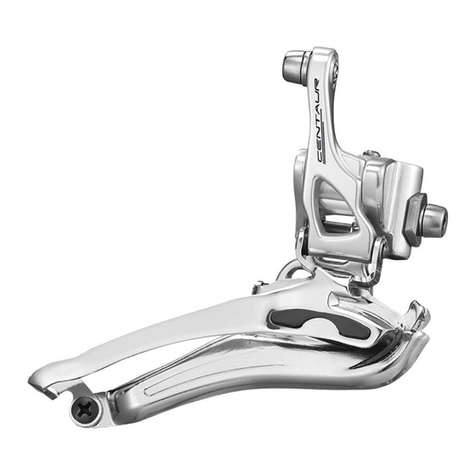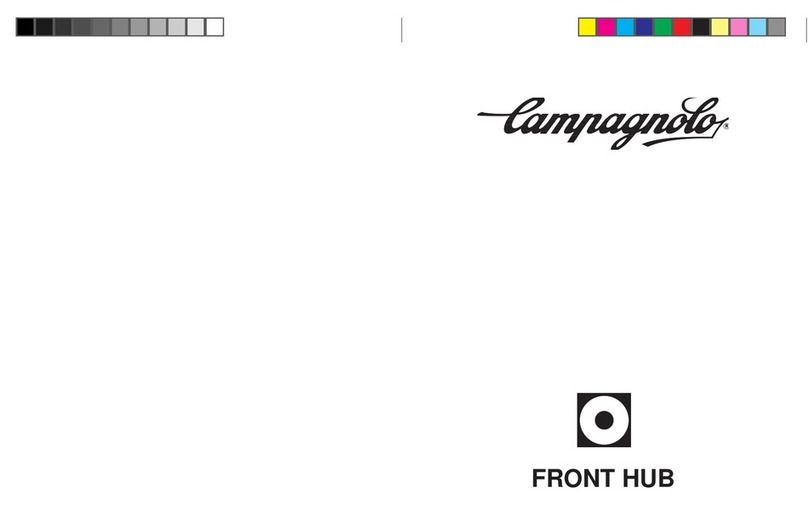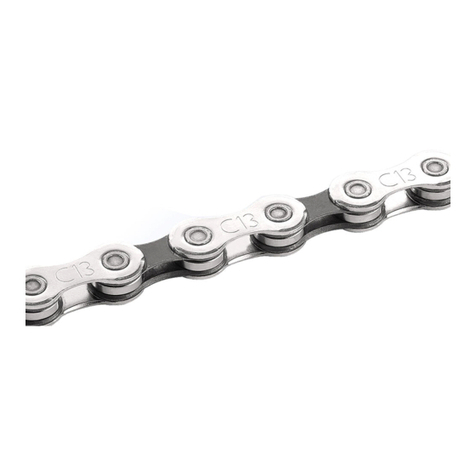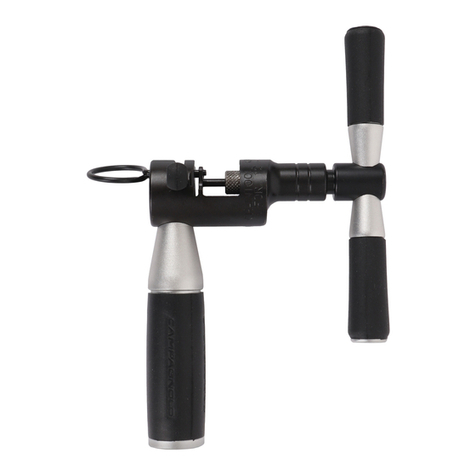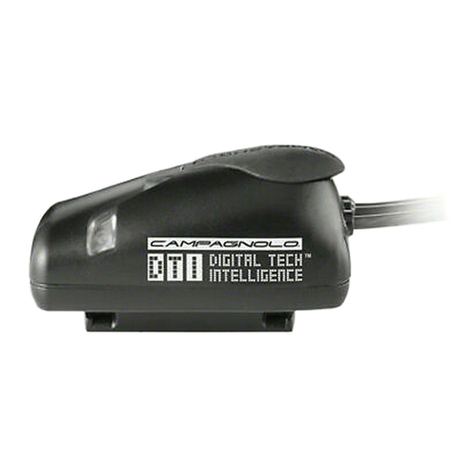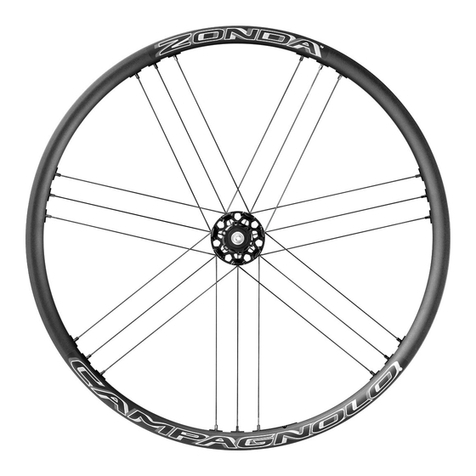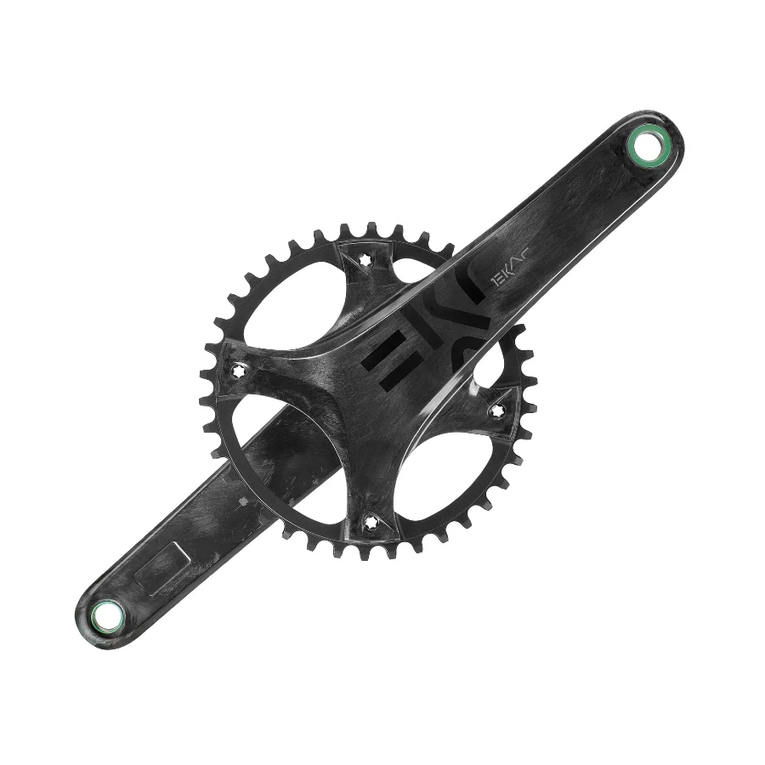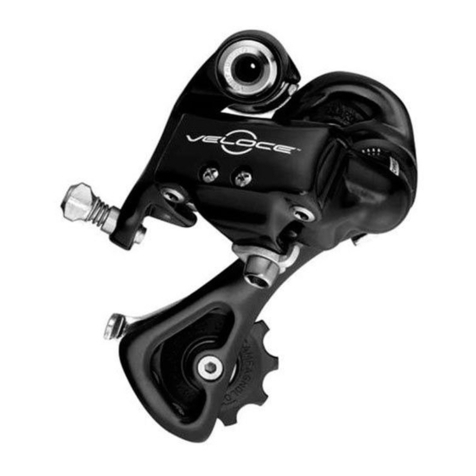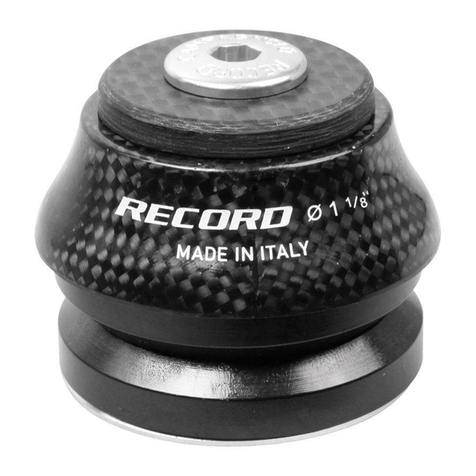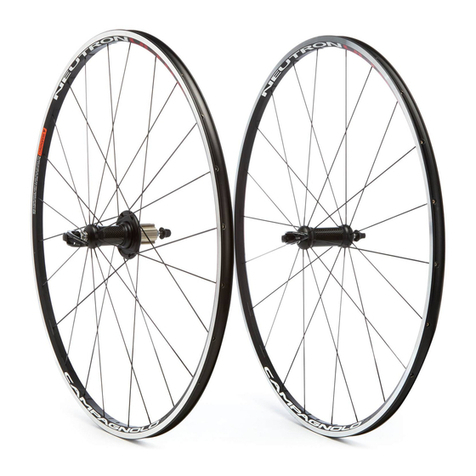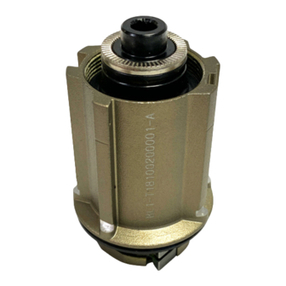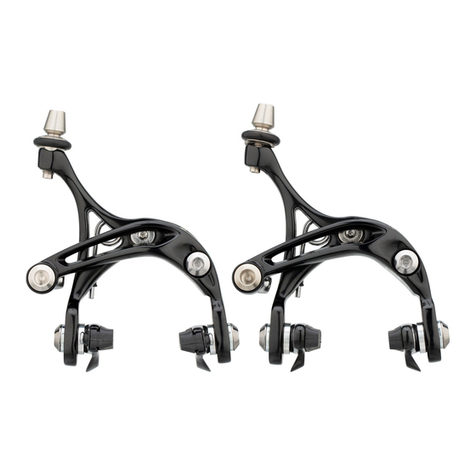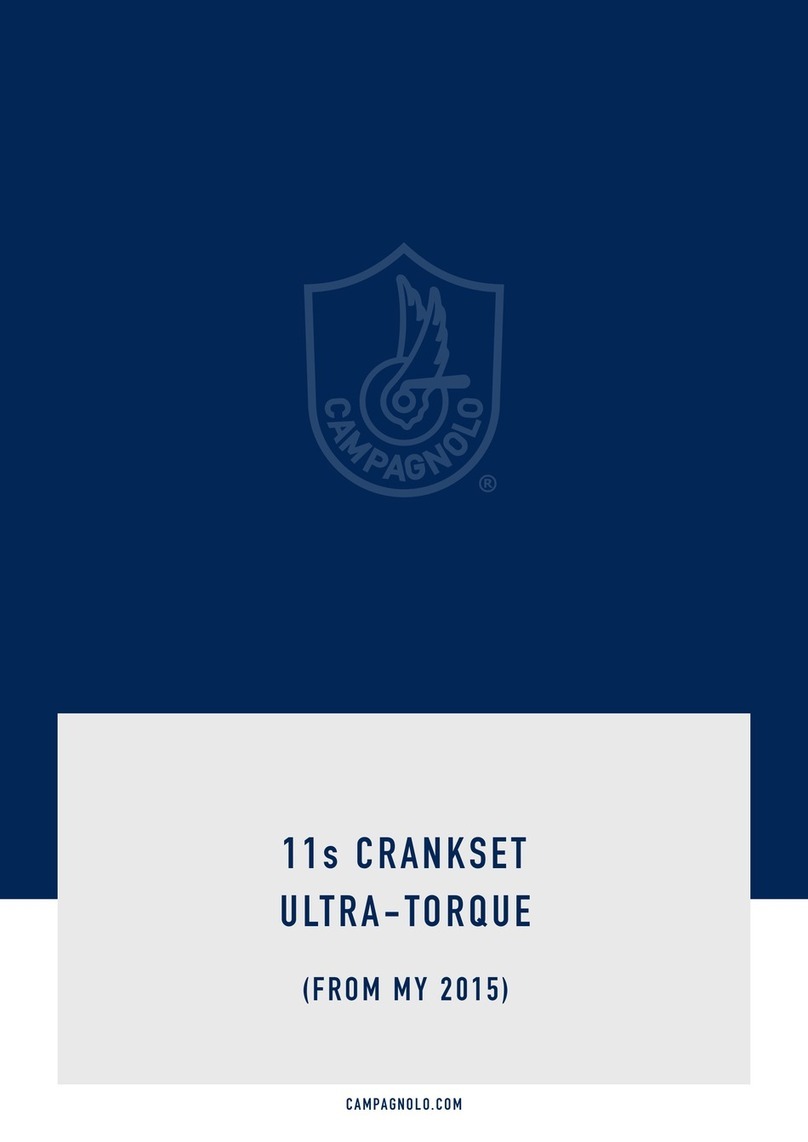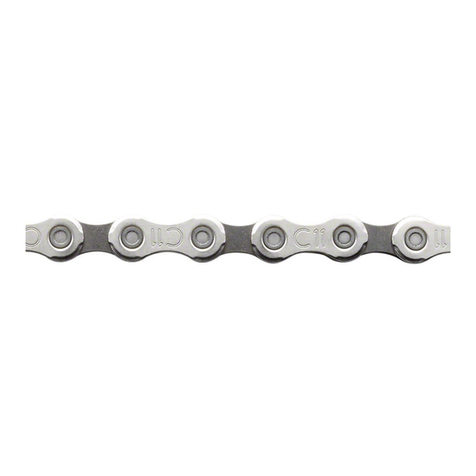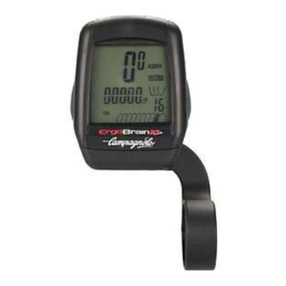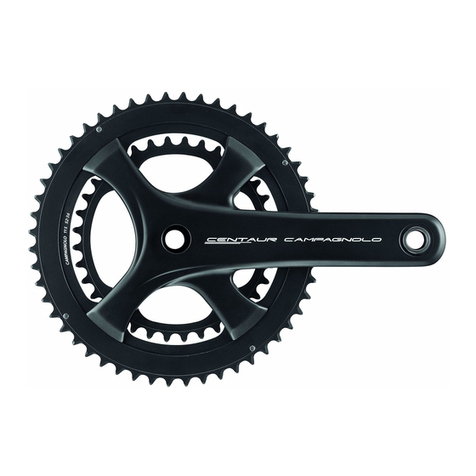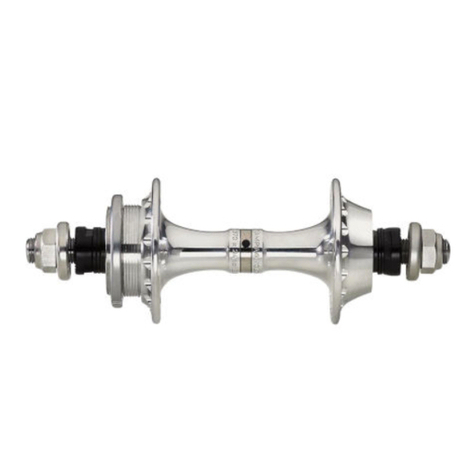
cod. 7225715 - Rev.03- 05/2022
© 2014 - 2022 Campagnolo S.r.l.
WARNING!
ATTENZIONE!
Con le ruote Campagnolo in composito utilizzate solo questi speciali pattini
freno rossi. Non utilizzate questi pattini con alcuna altra ruota. L’utilizzo
di qualsiasi altra combinazione pattini-cerchio potrebbe risultare in una
frenata insufficiente e/o irregolare ed essere causa di incidenti, lesioni
fisiche o morte.
L’uso di pattini freno diversi da quelli specificati potrebbe inoltre danneg-
giare seriamente il cerchio. Vi raccomandiamo di controllare sempre la
compatibilità pattino-cerchio indicata sulla confezione dei pattini.
H
1
CLICK
2
F
3
WEAR LIMIT
4 5
~1 mm~1 mm
• Se i portapattini del vostro freno Campagnolo sono come quelli rappre-
sentati in fig.1, seguite queste istruzioni:
- Con l’aiuto di un cacciavite, sollevate delicatamente la mollettina (H - Fig.
1, ove presente) e sfilate il pattino usurato dal portapattino (Fig. 1).
AVVERTENZA
Non forzate la mollettina durante la sostituzione del pattino.
- Se la mollettina è presente, inserite il nuovo pattino fino ad udire uno scat-
to (Fig. 1) e verificate che la mollettina stessa sia entrata in sede.
- Per facilitare l’inserimento del nuovo pattino freno, bagnate l’interno del
portapattino con dell’alcool; evitate assolutamente l’utilizzo di lubrificanti.
Verificate il corretto bloccaggio del pattino provando a sfilarlo in direzione
opposta.
ATTENZIONE!
L’alcool è una sostanza altamente infiammabile; utilizzatelo in luogo ben
ventilato. Non utilizzate l’alcool vicino a fuoco, fiamme, scintille, fonti di
calore o di combustione.
- Verificate che la distanza dei pattini dal cerchio sia di circa 1 mm come
illustrato in figura 5.
- Se non rispettano questa distanza fate riferimento alle istruzioni del
vostro freno o fate riferimento al vostro meccanico di fiducia.
ATTENZIONE!
Se i portapattini del vostro freno Campagnolo, o di altri costruttori, sono come
quelli rappresentati nella Fig. 3 (con vite di bloccaggio) NON utilizzate questi
pattini ma utilizzate i pattini codice BR-BO500X1.
• Verificate periodicamente lo stato di usura dei pattini e sostituiteli quando la
superficie frenante è in prossimità della fine della scanalatura contrassegnata
dalla scritta "WEAR LIMIT" o in caso la loro potenza frenante risulti insufficiente
(Fig. 4).
• Per mantenere sempre efficienti i pattini e non usurare i fianchi dei cerchi, vi
consigliamo di controllare costantemente e di asportare immediatamente con
un una lima eventuali corpi estranei che possono depositarsi sui pattini stessi.
• Ricordate che l’uso della bicicletta sul bagnato comporta una notevole ridu-
zione sia del potere frenante dei pattini sia dell’aderenza al suolo delle gom-
me. Ciò rende più difficile il controllo e la frenata della bicicletta. Al fine di
evitare incidenti, si raccomanda estrema attenzione nell’uso della bicicletta
sul bagnato.
• Se i portapattini del vostro freno Campagnolo sono come quelli rappre-
sentati in fig.2 (senza mollettina di sgancio) seguite queste istruzioni:
- Sfilate il pattino usurato dal portapattino (Fig. 2) e sostituitelo con uno
nuovo.
• Per facilitare l’inserimento del nuovo pattino freno, bagnate l’interno del
portapattino con dell’alcool; evitate assolutamente l’utilizzo di lubrificanti
(Fig. 2).
ATTENZIONE!
L’alcool è una sostanza altamente infiammabile; utilizzatelo in luogo ben
ventilato. Non utilizzate l’alcool vicino a fuoco, fiamme, scintille, fonti di
calore o di combustione.
- Verificate che la distanza dei pattini dal cerchio sia di circa 1 mm come
illustrato in figura 5.
- Se non rispettano questa distanza fate riferimento alle istruzioni del vostro
freno o fate riferimento al vostro meccanico di fiducia.
IMPORTANTE! Inserite il nuovo pattino, verificando che la freccia di avanzamento della ruota presente sul pat-
tino, sia nella direzione effettiva di avanzamento della ruota.
Individuate il pattino con l'indicazione "LEFT" per installarlo sul portapattino di SINISTRA e il pattino con l'indi-
cazione "RIGHT" per installarlo sul portapattino di DESTRA.
IMPORTANT! Insert the new block, ensuring that the wheel forward arrow on the block is in the actual direction
that the wheel spins.
Identify the block with the "LEFT" indication to install it on the LEFT HAND brake block holder and the block with
the "RIGHT" indication to install it on the RIGHT HAND brake block holder.
WICHTIG! Montieren Sie den Bremsschuh mit der Aufschrift „LEFT“ auf den LINKEN Bremsschuhhalter und den
Bremsschuh mit der Aufschrift „RIGHT“ auf den RECHTEN Bremsschuhhalter.
Montieren Sie den Bremsschuh mit der Aufschrift „LEFT“ auf den LINKEN Bremsschuhhalter und den
Bremsschuh mit der Aufschrift „RIGHT“ auf den RECHTEN Bremsschuhhalter.
BR-RE500
BR-RE500
WARNING!
Bicycles with composite Campagnolo wheels must only be fitted with these
special red brake blocks. Do not use these blocks on any other wheel.
Using any other brake block-rim combination may lead to insufficient and/
or unpredictable braking performance and cause accidents, injuries or
even death.
Using other brake blocks than the specified ones can seriously damage
the rim. Always check the compatible brake block-wheel combinations
indicated on the packaging of the brake blocks.
• If your Campagnolo braking system is equipped with the brake block
holders shown in fig. 1 (with release clip), follow these instructions:
- Using a screwdriver, delicately lift the spring (H - Fig. 1, where present) and
remove the worn block from the brake block holder (Fig. 1).
CAUTION
Do not force the clip when replacing the brake block.
- If the spring is present insert the new block until hearing a click (Fig. 1) and
ensure that the spring enters its seat.
- Moisten the inner side of the brake block holder with alcohol to facilitate
insertion of the new brake block; never use lubricants.
Check that the brake block is secured correctly in the holder by trying to
pull it out in the opposite direction.
WARNING!
Alcohol is highly flammable; use only in a well ventilated area. Do not use
alcohol near naked flame, sparks, or sources of heat or combustion.
- Check that the gap between the brake blocks and the wheel is approxima-
tely 1 mm, as shown in figure 5.
- If the gap is incorrect, adjust by referring to the instructions for your bra-
king system or take the bicycle to your preferred mechanic.
WARNING!
If your Campagnolo braking system (or system by another manufacturer) is
equipped with the brake block holders shown in fig. 3 (with retainer screw),
do NOT use these brake blocks. Use brake blocks P/N BR-BO500X1 instead.
• Periodically check the state of wear of the brake blocks and replace them
when the braking surface approaches the end of the groove marked "WEAR
LIMIT", or in the case of inadequate braking performance (Fig. 4).
• To keep the brake blocks working correctly and prevent wheel rim wear,
check the brake blocks continuously and, if necessary, use a file to immedia-
tely remove any foreign objects found adhering to the surface of the blocks
themselves.
• Always bear in mind that riding the bicycle in wet conditions significantly
reduces the braking power of the brake blocks and tyre grip. This makes the
bicycle itself more difficult to control and stop safely. Always ride with extre-
me caution in the wet to prevent the risk of accidents.
• If your Campagnolo braking system is equipped with the brake block hol-
ders shown in fig. 2 (without release clip), follow these instructions:
- Remove the worn brake block from the brake block holder (Fig. 2) and repla-
ce with a new component.
• Moisten the inner side of the brake block holder with alcohol to facilitate
insertion of the new brake block; never use lubricants (Fig. 2).
WARNING!
Alcohol is highly flammable; use only in a well ventilated area. Do not use
alcohol near naked flame, sparks, or sources of heat or combustion.
- Check that the gap between the brake blocks and the wheel is approxima-
tely 1 mm, as shown in figure 5.
- If the gap is incorrect, adjust by referring to the instructions for your braking
system or take the bicycle to your preferred mechanic.
ACHTUNG!
Mit den Campagnolo Laufrädern aus Verbundwerkstoff sollten Sie
ausschließlich diese speziellen roten Bremsschuhe benutzen. Verwenden Sie
diese Bremsschuhe mit keinem anderen Laufrad. Bei Verwendung jeder ande-
ren Bremsschuh-Felgen Kombination könnte die Bremsung unzureichend und/
oder unregelmäßig ausfallen und dadurch Unfälle mit schweren oder sogar
tödlichen Verletzungen verursachen.
Der Gebrauch von anderen als den vorgeschriebenen Bremsschuhen als den
angegebenen könnte zudem zu schweren Schäden an der Felge führen. Bitte
kontrollieren Sie unbedingt immer die auf der Packung mit den Bremsschuhen
angegebene Kompatibilität zwischen Bremsschuh und Felge.
• Wenn die Bremsschuhträger Ihrer Campagnolo Bremse die in Abb. 1 darge-
stellten sind (mit Freigabefeder) gehen Sie wie folgt vor:
- Heben Sie die Feder H (Abb. 1) mit Hilfe eines Schraubenziehers vorsichtig an
und ziehen sie den abgenutzten Bremsschuh vom Bremsschuhträger ab (Abb. 1).
WARNHINWEIS
Die Feder beim Auswechseln des Bremsschuhs nicht gewaltsam anheben.
- Fügen Sie den neuen Bremsschuh ein, bis er einrastet (Abb. 1) und stellen Sie
sicher, dass die Feder in ihren Sitz eingetreten ist.
- Zum leichteren Einsetzen des neuen Bremsschuhs, befeuchten Sie die
Innenseite des Bremsschuhträgers mit Alkohol; der Gebrauch von
Schmiermitteln sollte auf jeden Fall vermieden werden.
ACHTUNG!
Alkohol ist ein hochentzündlicher Stoff; er ist daher nur in gut gelüfteten
Bereichen zu verwenden. Alkohol niemals in der Nähe von Feuer, Flammen,
Funken, Wärme- oder Verbrennungsquellen verwenden.
- Stellen Sie sicher, dass der Abstand der Bremsschuhe von der Felge ca. 1 mm
beträgt, wie in Abbildung 5 dargestellt.
- Wenn dieser Abstand nicht eingehalten wird, nehmen Sie auf die Anweisungen
Ihrer Bremse Bezug oder wenden Sie sich an den Mechaniker Ihres Vertrauens.
ACHTUNG!
Wenn die Bremsschuhträger Ihrer Bremse von Campagnolo oder von anderen
Herstellern die in Abb. 3 dargestellten sind (mit Sicherungsschraube), verwenden
Sie NICHT diese Bremsschuhe, sondern die Bremsschuhe Code BR-BO500X1.
• Prüfen Sie regelmäßig den Verschleißzustand der Bremsschuhe und tauschen
Sie sie aus, wenn sich die Bremsoberfläche nahe bei der mit der Aufschrift "WEAR
LIMIT" bezeichneten Nut befindet oder falls ihre Bremskraft nicht mehr ausrei-
chend ist (Abb. 4).
• Um die Bremsschuhe immer einwandfrei funktionstüchtig zu erhalten und die
Felgenflanken nicht abzunutzen, empfehlen wir Ihnen, die Bremsschuhe ständig
auf Ablagerungen von Fremdkörpern zu kontrollieren und diese ggf. sofort mit einer
Feile zu entfernen.
• Wenn Sie Ihr Fahrrad bei nassen Straßenverhältnissen benutzen, sollten Sie da-
ran denken, dass die Bremsleistung der Bremsschuhe deutlich reduziert ist und
auch die Reifen wesentlich weniger auf dem Straßenbelag haften. Dadurch wird
es schwieriger für Sie, das Fahrrad zu kontrollieren und zu bremsen. Um Unfälle
zu vermeiden, sollten Sie daher das Fahrrad auf nassem Untergrund mit äußerster
Vorsicht benutzen.
• Wenn die Bremsschuhträger Ihrer Campagnolo Bremse die in Abb. 2 dargestell-
ten sind (ohne Freigabefeder) gehen Sie wie folgt vor:
- Ziehen Sie den abgenutzten Bremsschuh vom Bremsschuhträger ab (Abb. 2) und
ersetzen Sie ihn durch einen neuen.
• Zum leichteren Einsetzen des neuen Bremsschuhs, befeuchten Sie das Innere
des Bremsschuhträgers mit etwas Alkohol; der Gebrauch von Schmiermitteln
sollte auf jeden Fall vermieden werden (Abb. 2).
ACHTUNG!
Alkohol ist ein hochentzündlicher Stoff; er ist daher nur in gut gelüfteten Bereichen
zu verwenden. Alkohol niemals in der Nähe von Feuer, Flammen, Funken,
Wärme- oder Verbrennungsquellen verwenden.
- Stellen Sie sicher, dass der Abstand der Bremsschuhe von der Felge ca. 1 mm
beträgt, wie in Abbildung 5 dargestellt.
- Wenn dieser Abstand nicht eingehalten wird, nehmen Sie auf die Anweisungen
Ihrer Bremse Bezug oder wenden Sie sich an den Mechaniker Ihres Vertrauens.
ITALIANOENGLISH
DEUTSCH
BR-BO500
BRAKE PADS
FOR
COMPOSITE
WHEELS
